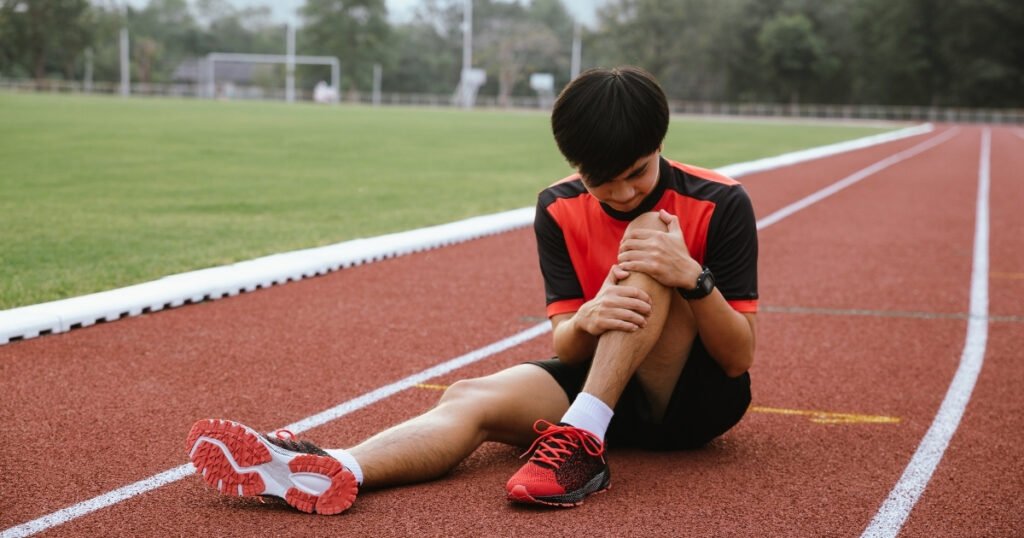Injured on the Field? Sports Injuries Decoded for Swift Recovery
Whether you enjoy playing sports participating in school athletics or are a sports fan dealing with injuries is just a part of the game. As someone working in the field of sports medicine, in India I often come across individuals facing issues like sprains, strains and other discomforts resulting from activity. In this blog post I’ll delve into sports related injuries guidance on when to seek medical assistance and tips to facilitate a quicker recovery process.
Exploring Sports Injuries: Varieties and Origins
Sports related injuries generally fall into two categories:
- Acute Injuries: These sudden and often traumatic incidents lead to injuries such as sprains (ligament tears or stretches) strains (muscle tears or overextensions) and fractures (bones).
- Overuse Injuries: Over time repetitive stress can cause injuries like tendonitis (inflammation of tendons) stress fractures (bone cracks) and bursitis (inflammation of fluid filled sacs surrounding joints).
Each sport comes with its set of associated injuries:
Cricket, Hockey, Tennis: Shoulder problems including rotator cuff tears, elbow tendonitis, and back strains.
Athletes commonly face types of injuries depending on their sport. For instance, runners often deal with knee pain, ankle sprains, shin splints and stress fractures.
Football and badminton players are prone to knee ligament injuries like ACL/MCL tears, hamstring strains and ankle sprains.
Gymnasts and dancers may experience back sprains, wrist injuries and ankle sprains during their performances. The RICE principle is a known method for providing care for sports related injuries.
In case of mild to sports injuries following the RICE, principle is recommended:
- Rest: Refrain from activities that exacerbate the pain to allow the body time to recover.
- Ice: Apply ice packs wrapped in a towel for 15 to 20 minutes times a day to reduce inflammation and swelling.
- Compression: Gently wrap the area with an elastic bandage for added support.
- Elevation: Elevate the injured part above heart level whenever possible to reduce swelling.
It’s crucial to know when professional medical attention is necessary. Consult a doctor if you:
- Experience pain, swelling or bruising.
- Are unable to put weight on the injured area or feel instability.
- Hear a popping sound during the injury incident.
- Have a wound.
- Feel numbness or tingling in the injured area.
- Notice any deformity, in the injured region.
Diagnosis & Treatment: What to Anticipate
When you go to see the doctor, they will perform a examination inquire about your injury and may request imaging tests, like X rays or MRIs.
The treatment plan will be based on the nature of the injury:
- Medication: Both over the counter pain relievers and prescribed medications can effectively manage pain and inflammation.
- Physical Therapy: A physical therapist can create an exercise regimen aimed at restoring strength, flexibility, and range of motion.
- Braces and Supports: These aids help stabilize the injured area during the healing process.
- Surgery: In cases such as ligament tears or fractures surgery may be warranted.
The Path to Recovery: Pointers for Speedy Healing
Though dealing with injuries can be discouraging you can play a role in your recovery. Keep these tips in mind:
Follow Your Doctors Guidance: Whether it pertains to medication usage, therapy sessions or limitations on activities adhering faithfully to your doctors’ recommendations is essential.
Warm Up and Cool Down: Avoid diving into exercise without a warmup to prepare your body. Cooling down afterward helps minimize post workout stiffness.
Emphasize Proper Technique: Familiarize yourself with the correct techniques, for your chosen sport. Incorrect form can contribute to injuries developing gradually over time. Mix things up in your workout routine to avoid strain and improve fitness.
Listen to your body. If something hurts take a break and rest.
Prevention is key: play smart. Keep injuries at bay.
To steer clear of sports injuries it’s best to follow these tips:
- Strength training helps build muscles that support your joints and increase resistance to movements.
- Stay flexible, with stretching exercises to keep muscles and joints agile lowering the risk of strains.
- Take it slow when increasing the intensity or duration of your workouts. Give your body time to adjust.
- Wear the gear for your sport to minimize injury risks.
- Stay mindful of your surroundings watching out for surfaces or potential hazards that could cause accidents.
Book an appointment:
Mobile: 8095 37 0000
Telephone: 080 2503 4444, 080 2503 4455
Email: info@svasthahospital.com
Remember, you’re not alone on this journey. At Svastha, we’re all about helping you regain independence and find joy in movement. Let’s walk this path together, one step at a time.

